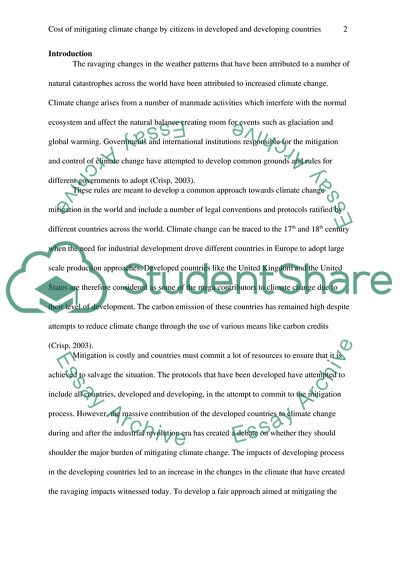Cite this document
(“Should the citizens of industrialized countries (e.g. UK or US) be Essay”, n.d.)
Should the citizens of industrialized countries (e.g. UK or US) be Essay. Retrieved from https://studentshare.org/history/1634580-should-the-citizens-of-industrialized-countries-eg-uk-or-us-be-expected-to-bear-higher-costs-in-mitigating-climate-change-than-the-citizens-of-developing-countries-just-because-of-the-emissions-produced-by-their-ancestors
Should the citizens of industrialized countries (e.g. UK or US) be Essay. Retrieved from https://studentshare.org/history/1634580-should-the-citizens-of-industrialized-countries-eg-uk-or-us-be-expected-to-bear-higher-costs-in-mitigating-climate-change-than-the-citizens-of-developing-countries-just-because-of-the-emissions-produced-by-their-ancestors
(Should the Citizens of Industrialized Countries (e.G. UK or US) Be Essay)
Should the Citizens of Industrialized Countries (e.G. UK or US) Be Essay. https://studentshare.org/history/1634580-should-the-citizens-of-industrialized-countries-eg-uk-or-us-be-expected-to-bear-higher-costs-in-mitigating-climate-change-than-the-citizens-of-developing-countries-just-because-of-the-emissions-produced-by-their-ancestors.
Should the Citizens of Industrialized Countries (e.G. UK or US) Be Essay. https://studentshare.org/history/1634580-should-the-citizens-of-industrialized-countries-eg-uk-or-us-be-expected-to-bear-higher-costs-in-mitigating-climate-change-than-the-citizens-of-developing-countries-just-because-of-the-emissions-produced-by-their-ancestors.
“Should the Citizens of Industrialized Countries (e.G. UK or US) Be Essay”, n.d. https://studentshare.org/history/1634580-should-the-citizens-of-industrialized-countries-eg-uk-or-us-be-expected-to-bear-higher-costs-in-mitigating-climate-change-than-the-citizens-of-developing-countries-just-because-of-the-emissions-produced-by-their-ancestors.


